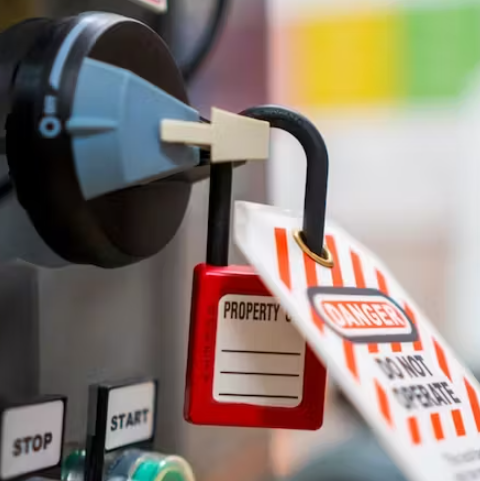Yes, PPE can be injection moulded, utilizing various plastics for durability, cost-effectiveness, and design flexibility.
Overview of Injection Moulding for PPE
Injection moulding is a versatile and efficient manufacturing process widely used in producing personal protective equipment (PPE). This method involves melting plastic pellets and injecting them into a mould under high pressure.
Basics of Injection Moulding ProcessUnderstanding the Process
Injection moulding starts with feeding plastic materials into a heated barrel. Here, the materials melt and mix thoroughly.
Key Parameters
The success of this process hinges on several critical parameters. These include the temperature of the molten plastic, injection pressure, and cooling time. The temperature typically ranges between 200°C and 300°C, depending on the material. Injection pressures can vary from 35 to 140 MPa, ensuring the material fills the mould cavity completely. Cooling times are crucial for achieving the desired strength and durability in the final product, usually taking between 30 seconds and a few minutes.
Suitability for Producing PPE
Material Flexibility
PPE products demand materials that are lightweight, durable, and comfortable. Injection moulding accommodates a wide range of plastics and composites, making it ideal for producing PPE. Commonly used materials include polypropylene, polyethylene, and polycarbonate, each offering unique benefits in terms of strength, flexibility, and resistance to chemicals or impacts.
Customization and Consistency
The process allows for high customization of PPE designs, accommodating various sizes, shapes, and features. This adaptability ensures that PPE meets specific safety standards and user requirements. Consistency is another significant advantage, as injection moulding can produce thousands of identical PPE units, ensuring uniform quality and performance.
Cost-Effectiveness
In terms of cost, injection moulding is highly efficient for mass production. The initial setup and mould creation can be expensive, with costs ranging from $1,000 to $100,000 depending on the complexity. The speed of the process also contributes to its cost-effectiveness, with cycle times as short as 15 seconds for simple parts.
Limitations and Considerations
While injection moulding is highly effective for PPE production, it does have limitations. The initial investment in mould design and machine setup can be significant, making it less ideal for small-scale productions. Also, the design of PPE must be mould-friendly to avoid issues with material flow or cooling.
Quality Control and Testing of Injection Moulded PPE
Ensuring the quality and efficacy of injection moulded PPE is critical for the safety and satisfaction of end-users. This encompasses adhering to specific standards and certifications, as well as employing rigorous testing methods.
Standards and Certifications
Adherence to International and National Standards
- ISO Standards: For example, ISO 9001 for quality management systems, ensuring consistent quality across all products.
- Industry-Specific Certifications: Such as NIOSH certification for respiratory protective devices, ensuring they meet the required filtration efficiencies.
Compliance with Regulations
- OSHA Standards: Compliance with Occupational Safety and Health Administration guidelines, especially for PPE used in hazardous work environments.
- CE Marking: In Europe, CE marking indicates compliance with health, safety, and environmental protection standards.
Testing Methods for Safety and Efficacy
Physical and Mechanical Testing
- Impact Resistance: Testing for helmets involves dropping a fixed weight from a specific height and measuring the impact.
- Tensile Strength: Measured to ensure materials can withstand the stresses they will encounter in use.
Chemical and Environmental Testing
- Chemical Resistance: Assesses how materials react to various chemicals they might encounter.
- UV Aging: Tests the material’s resistance to degradation from ultraviolet light exposure.
Performance Testing
- Breathability for Respiratory PPE: Measured in terms of air flow through the material, ensuring it meets the necessary standards for comfort and safety.
- Filtration Efficiency: For masks, testing the percentage of particles filtered out by the material.
Durability Testing
- Wear and Tear: Simulated long-term use to assess how the PPE holds up over time.
- Repeated Sterilization: For reusable PPE, testing how it withstands repeated cleaning and sterilization processes.
Cost and Efficiency Considerations
- Testing Costs: Ranging from a few hundred to several thousand dollars depending on the complexity of the PPE and the extent of testing required.
- Impact on Production Time: Effective testing can add to the overall production time but is essential for ensuring quality.
| Testing Method | Purpose | Standard/Certification | Cost Range |
|---|---|---|---|
| Impact Resistance | To assess durability under impact | ISO, NIOSH, OSHA | $500 – $2000 |
| Tensile Strength | To measure material strength | ISO 9001 | $300 – $1500 |
| Chemical Resistance | To check resistance to chemicals | CE Marking | $200 – $1000 |
| UV Aging | To test for UV degradation | ISO 9001, CE Marking | $400 – $1600 |
| Breathability | For comfort and safety in masks | NIOSH | $500 – $2500 |
| Filtration Efficiency | To test particle filtration | NIOSH | $1000 – $3000 |
| Wear and Tear | To simulate long-term use | ISO, OSHA | $600 – $2000 |
| Repeated Sterilization | For reusable PPE durability | ISO 9001, CE Marking | $500 – $2000 |





